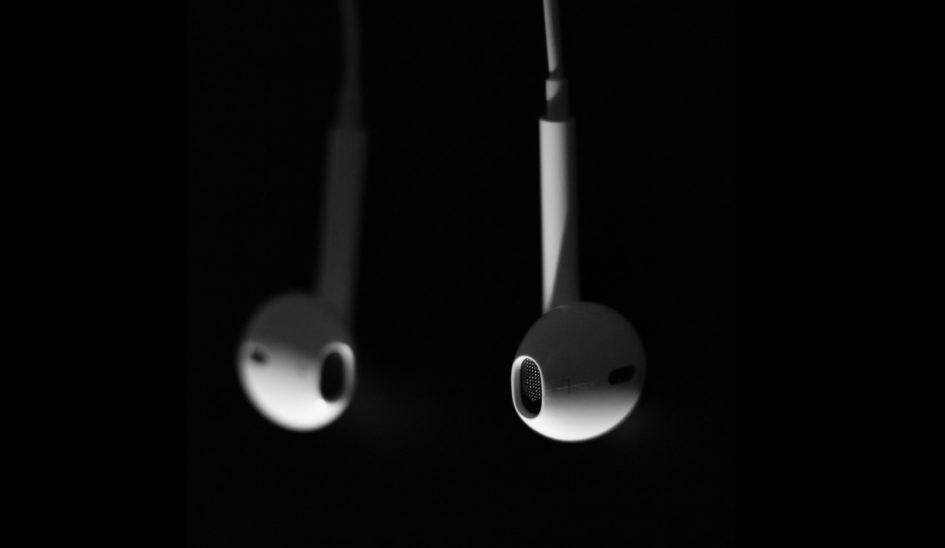In 2013 news broke that Rich Lee, body modification and music enthusiast, implanted magnets into each tragus to be able to listen to music without external headphones. The technology needed a homemade chunky necklace that “creates a magnetic field causing the implant to vibrate and produce sound”, according to Lee. While mainstream technology isn’t there yet, Apple’s AirPods aren’t far away, and maybe helping to ease the majority into the idea of implanted technology and the benefits it can offer for everyday life.
Apple’s Current Technology
Apple released AirPods in 2016, earphones that are completely wireless and designed to be worn all the time, giving them plenty of comparisons to implants. Apple also made the bold decision to remove the headphone jack from their iPhone 7, disappointing many consumers, but nudging them in the direction of AirPods. AirPods are meant for more than just listening to music, as they can connect to other Apple devices, such as your smartphone, to not only notify you of a text but to read it to you in a quiet voice, helping you to go hands-free. The built-in microphone allows you to communicate with Siri, but it can also detect when a conversation starts and will automatically lower the volume of what you’re listening to. You can also communicate with the AirPods by double tapping one of them. It’s been reported that in 2019, the second generation of AirPods will be released that includes wireless charging, a sleeker design and a portable case for charging on the go, making these even closer to implants, as the list of reasons to remove them keeps getting shorter.
The Portability Factor
One of the biggest reasons wireless and Bluetooth enabled headphones are popular is that they are highly portable and offer ease of use. You can go further from the device they’re paired with, not restrained by the length of a wire, and there’s no need to worry about getting caught on anything. Implanted headphones would also mean you wouldn’t need to worry about them getting wet, so you could listen to music in the shower or while swimming without fear of damaging them. Some reports say that current and future wireless headphones are becoming so small that they’ll be easily lost, which implanted tech resolves. In contrast to some of the smaller earphones, traditional headphones that incorporate modern technology, such as going wireless and using Bluetooth, can offer great sound, noise-canceling, friends can plug into them to listen with you and they tend to have a better battery life due to their larger size.
Bone Conduction Headphones
The technology behind bone conduction headphones stems from hearing aid designs. Bone conduction lets you hear sounds through the vibrations of the bones in your face. The sound bypasses the outer and middle ear, where the eardrum sits and stimulates the inner ear, where a sound is heard. This means bone conduction headphones let you listen to music while being aware of your surroundings. These are great for runners and cyclists who need to be able to hear traffic and people to ensure their safety. Implanted earphones would work on the same principle as bone conduction headphones, transmitting sound via bones rather than air, allowing the ear to be uncovered for surrounding sounds, but the sound quality would need to be improved before masses committed to implants.
What Current Technology Means For Future Headphones
While the AirPods are not implanted, they are one of the closest pieces of current technology due to their design that makes them highly wearable, the idea being that if you have no need to take them out, you may as well have them permanently in. Apps will be developed to streamline and expand the applications of the AirPods, such as permanent listening and recording, enabling them to save a snapshot of conversation to your phone on your demand, something that could transform evidence in law. Your phone could automatically set reminders based on what your earphones hear during conversations, making daily tasks easier. Implanted headphones would give people complete control over the noises they hear, and it’s predicted that they will eradicate the hearing aid market. Imagine going to upgrade your smartphone and the sales assistant implants the headphones that come with them at the end of the sale. Implanted headphones would likely just be the beginning, and more types of implanted tech will be widely accepted and become the norm.
The line between technology and humans is beginning to blur, as the two start to act seamlessly to improve human life. Implanted headphones are a small step in the direction of implanted technology that appeals to the masses.
Guest post by Jackie Richards
*hero image used with permission https://unsplash.com/photos/_icC-RYrAFA

April 9, 2020 at 9:26 am
It is great that you have touched upon the Bone Conduction part, this is an excellent technology for the betterment and safety of humanity.
Below is a major article covering in detail about the same.
http://audiowavegeek.com/best-bone-conduction-headphones-of-2017/